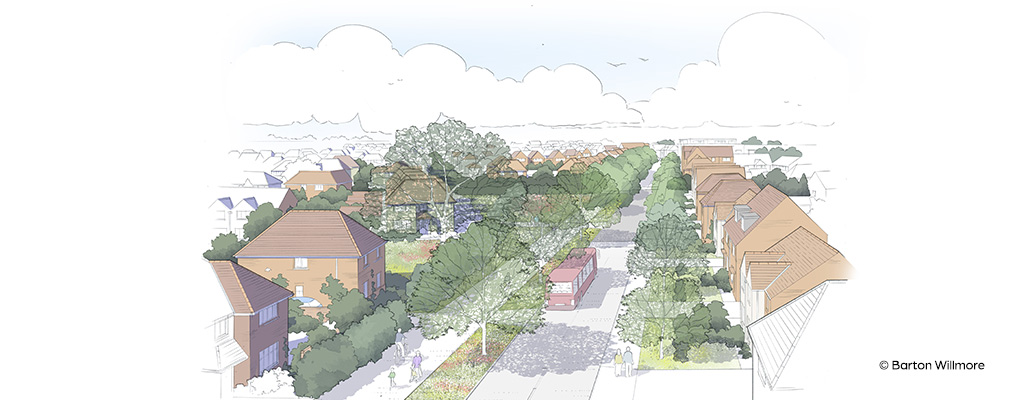The solution
We needed to pull together the conflicting priorities of a leading housebuilder: maximising building plots and amenity space; and those of the adopting authorities in meeting their standards.
Given the change in officer, we understood that early dialogue was key to achieving a timely and positive outcome for the client. We consequently prioritised discussions with the client and highways officer to work through the competing comments, and ensure that subsequent variations to the approved layout would meet with approval, without need for further iterations and unnecessary delay.
In this way, we were able to agree upfront that we could address the substandard road formation bearing capacity by reinforcing the road foundation with a geo-grid system to ‘stiffen up’ the road foundation. Working with the Goetechnical engineers and a specialist geosyntheitic manufacturer, we proposed two layers of geogrid were used within the capping layer – an innovative solution that was subsequently approved by the highways department. This solution meant that the overall construction thickness was no greater than that of a standard road, and avoided alternative more onerous/costly solutions such as localized ground improvement techniques.
In the context of the pumping station, our experience shows that no two situations are the same and our approach of engaging early with multiple parties ensured we were able to resolve complexities around telemetry, internal pumps and pipework, floatation and ballast calculations, emergency storage requirements and septicity calculations, right through to legal and landscape plans. We provided the focus to understand the requirements of each stakeholder to get a successful design that didn’t leave the client trying to tie multiple lose ends together.
Whilst the work undertaken by our in-house flood risk experts provided the evidence required to demonstrate that a culverted road crossing of the existing rhyne watercourse was acceptable in principle to the local authorities drainage officers, it was time to drill down into the detail. We therefore undertook a detailed 1D/2D hydraulic model of the rhyne utilizing topographical data in combination with datasets from Environment Agency monitoring stations, along the rhyne network in the locality of the site. This provided the evidence needed to demonstrate that the proposed culvert wouldn’t have a detrimental effect on either the upstream or downstream catchments during extreme rainfall events.
What’s more, we produced a culvert design solution that also met the requirements of the highway and drainage authorities, so that there was sufficient space to get the proposed utilities over and under the culvert, and be structurally sound to be classified as a highway supporting structure.





